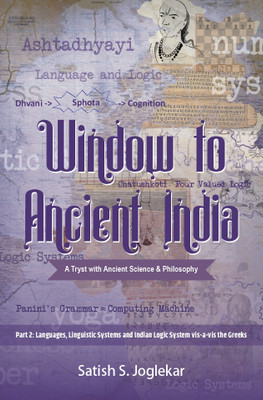Window to Ancient India : A Tryst with Ancient Science & Philosophy | Part II : Languages, Linguistic Systems and Indian Logic System vis-a-vis the Greeks(Paperback, Satish S. Joglekar)
Quick Overview
Product Price Comparison
Part II traces the evolution of languages from pre-Vedic Sanskrit to modern vernaculars via the Prakrit and the Apabravsha way. Coverage of Sanskrit, Prakrit, Apabravsha and Vernacular literature is illuminating - examples of Chitra Kavya, a genre of Sanskrit poetry, reflect the ingenuity of Sanskrit poets. The evolution of modern scripts from Brahami and families of Indian languages are well exemplified.It explains, why Panini's grammar is sufficiently detailed to qualify as the earliest known computing language. His grammar is one of the earliest context-sensitive grammars with a hint of transformational grammar. Part II covers topics like the Philosophy of Language and Sphota Theory. The latter anticipated psycholinguistics ahead of its time. Indian languages are phonetic and the only languages that are word order independent. Thanks to Panini's Karaka (Case) theory and his categorization of phones depending on various movements of mouth and tongue. No wonder Chomsky has acknowledged Panini as his Guru.Lastly, it compares the Indian and Greek Logic systems through examples, bringing out differences in their approach. For example, Indians were not restricted by the principle of 'Excluded Middle' leading very on to the recognition of multi-valued logic.

